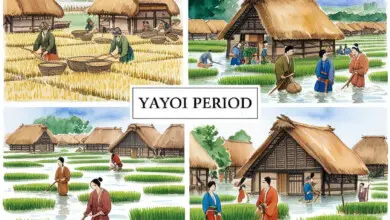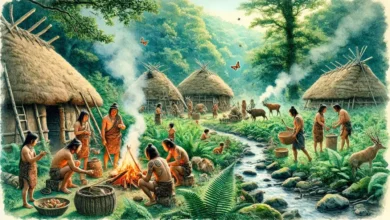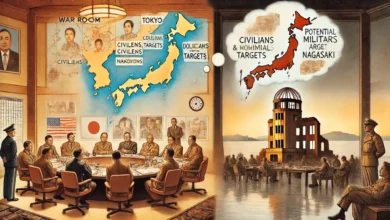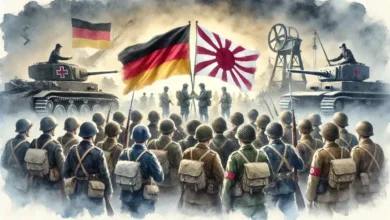The Taisho Period: Unique Highlights That Will Thrill You
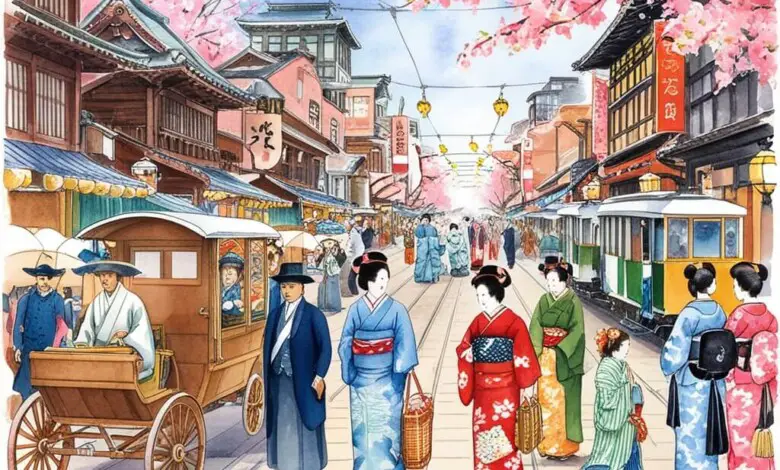
The Taisho period, which lasted from 1912 to 1926, is an important time in the history of Japan. Named after the Emperor Taisho, this time period was very different and became modern very quickly, it helped the connection between the traditional politics of the Meiji area with the modern politics which succeeded it.
The essence of the Taisho period concerns its foundational role in the history of Japanese society, for instance, its political situation and cultural atmosphere.
Historical Context
The Meiji Restoration’s Profound Transformation
The Meiji Restoration from 1868 to 1912 was important for Japan. It changed Japan’s system through a revolution. This started Japan’s growth. The Meiji period ended the rule of the shoguns. It brought back the rule of the emperor. This change sped up Japan’s industrialization and modernization.
This was a time of big social and political changes. These changes set the stage for economic shifts. These shifts made the Taisho era different from other times.
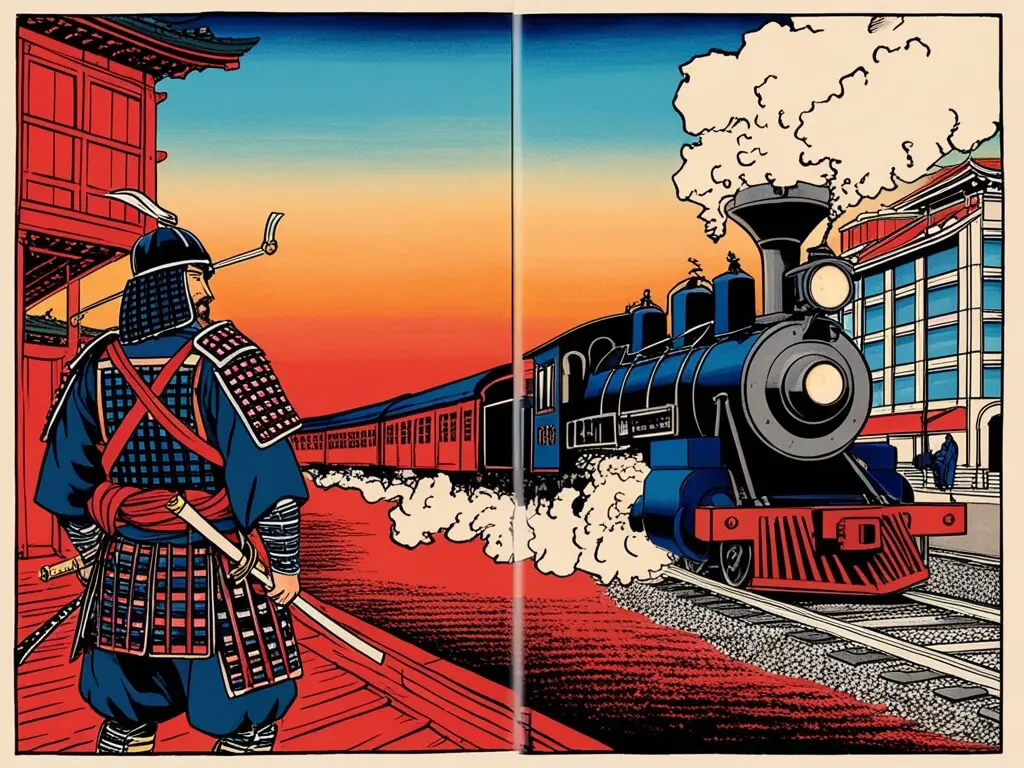
Mystical Shift: From Meiji Epoch to the Dawn of Taisho Era
The Meiji Emperor died in 1912. This ended Japan’s fast modernization period. His son, Crown Prince Yoshihito, became Emperor Taisho. This started a new era. The Taisho era aimed to solve the problems of the Meiji period. These problems were harder because the world was bigger and more complex.
Japan faced problems from other regional forces and wars in China and Russia. These were big issues for Japan’s foreign policy.
At home, people were divided. They had learned from the western world and wanted more say in Taisho’s democracy.
So, the Taisho era was about balancing growth and adapting to changes at home and abroad.
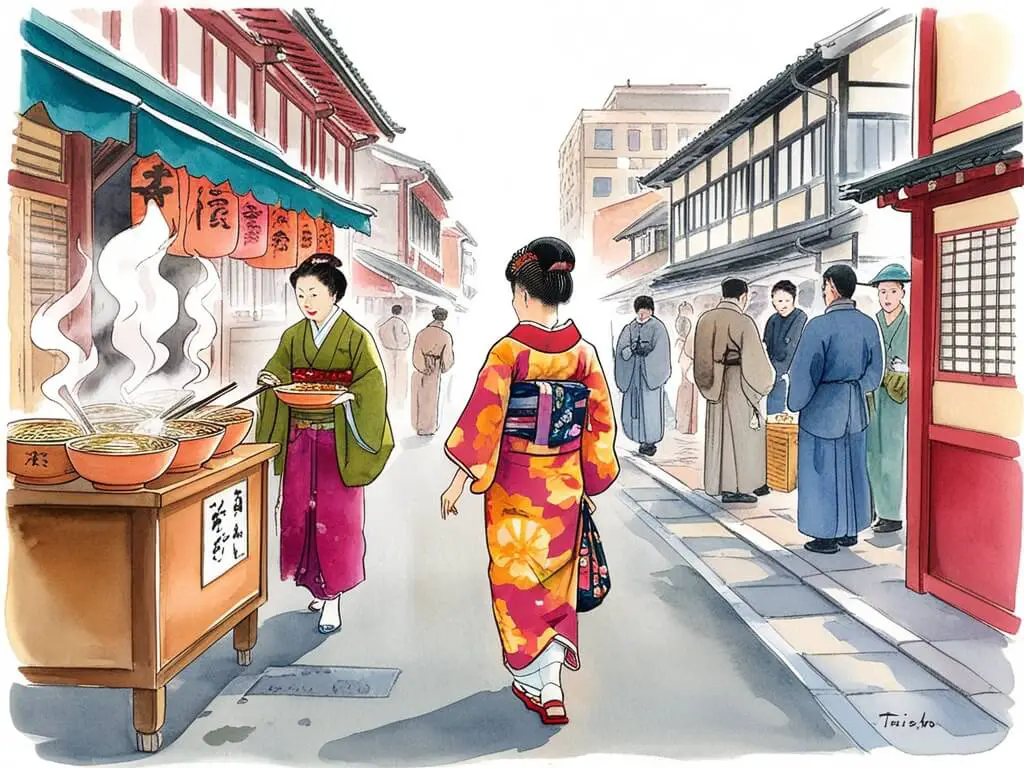
Political Landscape
The Taisho Emperor’s Death
Taisho had health problems, probably from a disease called meningitis when he was a kid. This made him too weak to do his job as an emperor. This left a gap in Japan’s leadership.
This gap caused a big change in Japan’s government. Power moved from the emperor to the Diet, Japan’s parliament, and its elected members.
This change meant Japan was no longer ruled just by the emperor. It became a modern monarchy, controlled by a constitution. This was a key change in Japan’s government.
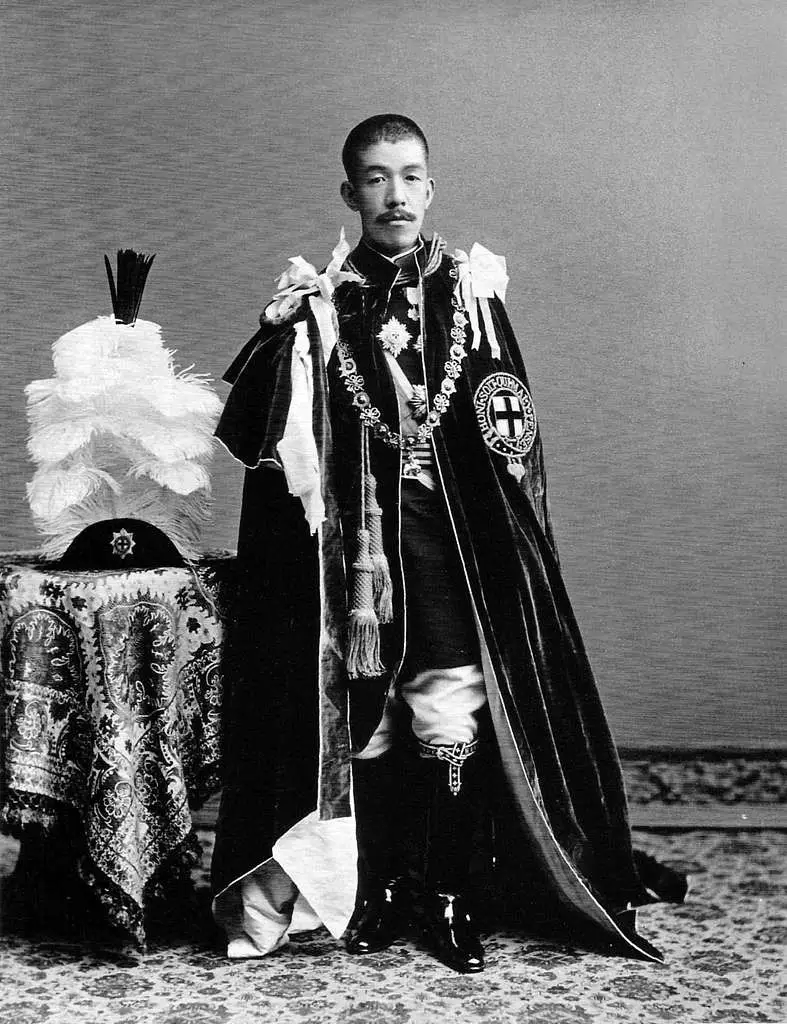
Shifts in Political Power
Japan became more aware of democracy during the Taisho era. This time was known for the growth of the “Taisho Democracy” movement.
This movement wanted more people to take part in democracy. It also wanted the government to be responsible. Its first goal was to change voting rules. This happened in 1925 when every man got one vote.
The movement also wanted big changes. It saw political parties as important players. The Rikken Seiyukai and Kenseikai parties took turns in power.
People started to pay more attention to what the parliament was doing. The media also watched the government more closely.
This was a time when Japan was moving towards democracy.
Democratic Movements
The Taisho period was a special time in Japan. It started a new chapter in Japanese politics in 1925. This was when the Universal Manhood Suffrage Law was passed. This law let men over 25 who paid a small tax vote.
Before this, only a small group of rich people could vote. The date the law started was a big chance to see what the government thought. It also let the public get involved in politics. This was an important step in building a democracy that wasn’t finished yet.
Economic Changes
Industrial Growth
During the Taisho era, Japan’s industry grew a lot. This built on the strong start from the Meiji period. Many projects, like railways and power plants, helped heavy industries like steel production grow.
World War I made this growth faster. European countries at war needed to use their resources for the war. Japan, staying neutral, became an important supplier of warships and merchant ships for both sides. This helped Japan’s shipbuilding industry grow a lot.
The war demand not only made Japan’s factories bigger but also made them important global producers of key industrial goods. This time was key in shaping Japan’s industry and its place in the global market.
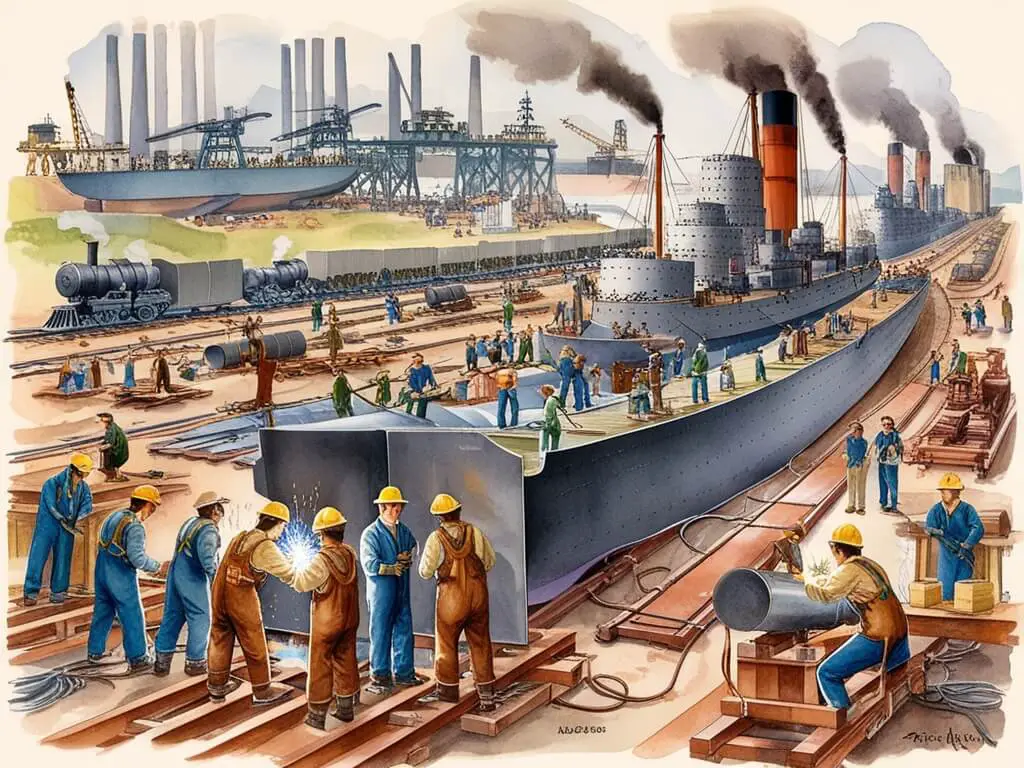
Influence of Western Economies
In the Taisho era, Japan worked hard to fit into the world economy. This was heavily influenced by Western ways. This time saw a lot of Western technology and methods come in.
Engineering ideas from America and Europe helped heavy industries like steel production and shipbuilding grow. They used scientific management, a method started by Frederick Winslow Taylor, to make industry more efficient.
Japan also started using the gold standard. This tied its money to gold mostly held by Western countries. This helped Japan trade and invest with other countries.
While these Western ideas helped Japan’s economy grow, they also made it vulnerable. Japan depended on foreign raw materials and was affected by changes in the world economy.
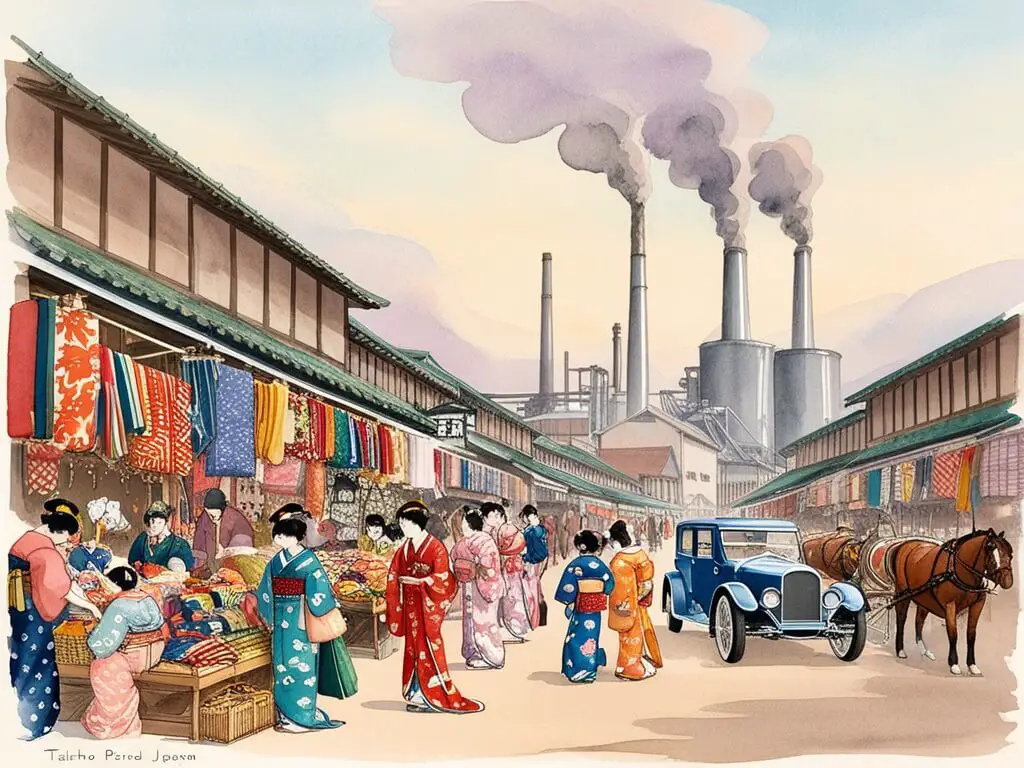
Economic Challenges
In the Taisho era, Japan’s industry grew but also faced big challenges. The money made from war production led to hard times after World War I. A worldwide recession hit, and Japan, which relied on selling war goods, was affected.
The need for its ships and war materials went down. This caused many factories to close and people to lose their jobs. This showed the problems of an industry focused on war production.
Making things worse was the Great Kanto Earthquake of 1923. It was one of the worst earthquakes ever and destroyed Tokyo and Yokohama. The damage caused big challenges and cost a lot to fix, which hurt the national budget. This took resources away from programs to help recover from the recession.
Social Transformation
Urbanization
During the Taisho era, many people moved to big cities like Tokyo and Osaka. They left rural areas hoping for better jobs. This big move wasn’t just for money. The end of the old social system and the appeal of city life also attracted people.
This quick population change led to many social and cultural changes. Family structures started to change as people adapted to city life. New entertainments like movies and cafes became popular. They catered to the growing city population. Western styles and ideas became more common, challenging old social rules.
So, the Taisho era saw a mix of old and new. This was largely due to fast urbanization, which changed Japanese society.
Changing Roles of Women
In the Taisho period, women started to change. They wanted more rights, better schools, and control over their lives.
More people could read and ideas were changing. This helped women break free from old rules. Schools like the Tokyo Women’s Higher Normal School helped women think for themselves.
War made factories need workers, so women got jobs. Earning money let women be financially independent. This challenged the old idea that women should only be wives and mothers.
The “Modern Girl” or “Moga” appeared during this time. She defied social norms by wearing Western clothes, sporting short hair, and frequenting cafés and jazz clubs. She wasn’t the demure, feminine girl people expected.
So, the Taisho era was a big step forward for women in Japan. It prepared them for bigger roles in society and the economy.
Education Reforms
During the Taisho period, Japan worked hard to update its education. The government knew people needed better skills, so more kids could go to primary school.
By the end of this period, almost everyone could read. But education wasn’t just about reading and writing.
School subjects were changed to include science, technology, and practical skills. This was to create skilled workers for Japan’s industries.
Students learned about Western ideas, which gave them new ways of thinking and encouraged creativity. These changes in education helped Japan become more modern.
People who got this new education helped grow industries and started questioning old social rules and political ideas.
Art and Literature
During the Taisho time, culture became very lively, especially in art and writing. A new kind of art grew that mixed old Japanese beauty with Western styles.
This cool mix led to art like woodblock prints by Shigeru Aoki, inspired by Vincent van Gogh, and Yoga School paintings showing light and dark.
Writing also did well in this time. Talented writers like Ryunosuke Akutagawa got famous for their funny and creative short stories about feeling out of place and life.
Poets like Hakushu Kitahara appeared, bringing new romance to their poems and a wish for a simpler, more natural world. These great writers and many others left a big mark on Japan’s culture.
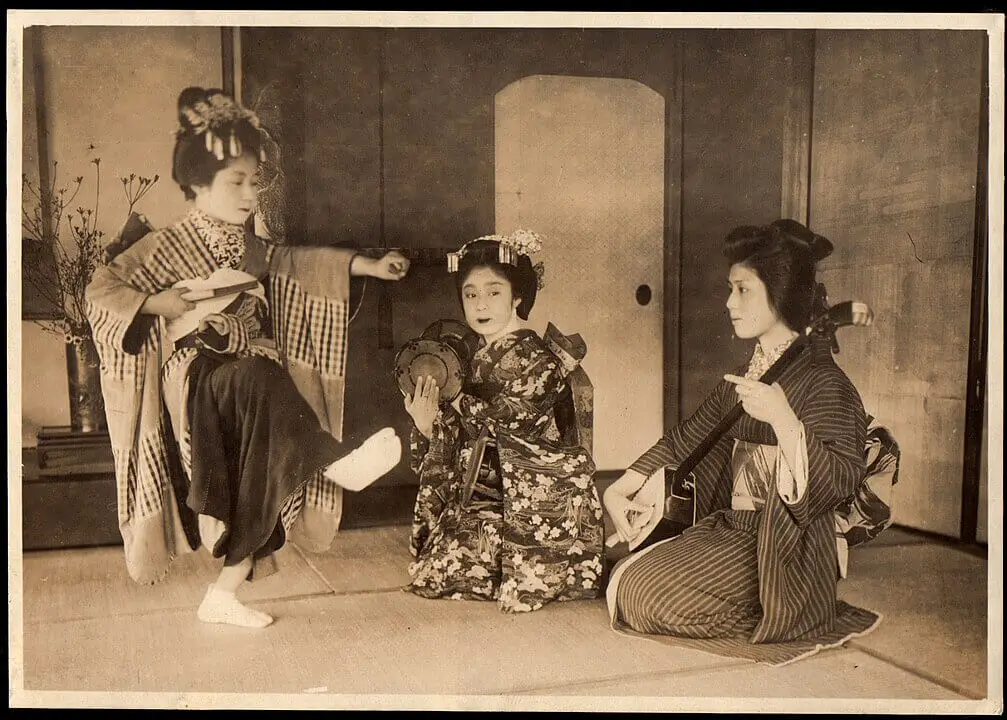
Influence of Western Culture
During the Taisho period, Western culture entered Japanese society, especially in cities, creating an interesting mix.
People loved jazz music with its lively beats at cafes and dance halls. The sounds of saxophone and piano showed a modernizing Japan.
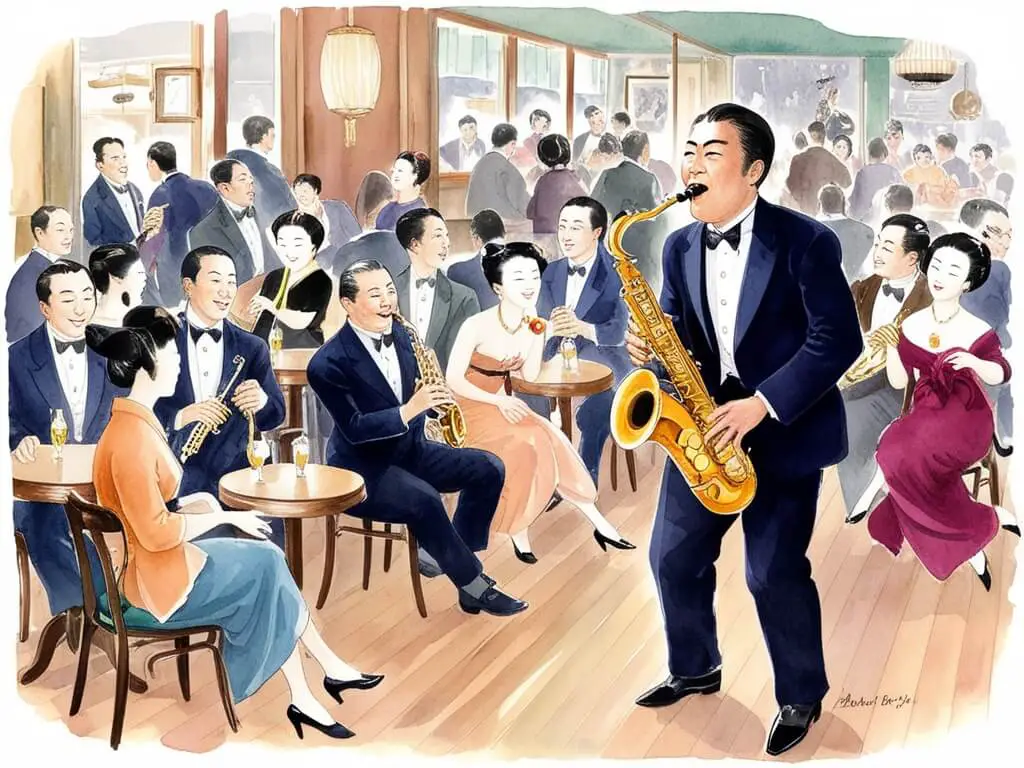
Fashion changed a lot too. Western clothes became popular, seen as modern and freeing. Young ladies liked the “Moga” style, with short hair, hats, and loose dresses, not like the usual kimono.
Movies, a new thing from the West, excited people. Silent films with their dramatic stories and moving images delighted viewers. Japanese filmmakers quickly adopted this art and told stories about love, sadness, and societal changes in a fast-changing nation.
But it wasn’t just one way. Western influences also inspired Japanese artists and filmmakers to see their culture in a new, modern Japanese way.
Notable Cultural Figures
Ryunosuke Akutagawa and Hakushu Kitahara were great writers. Many other talented people also did well.
One of them was Yokoyama Taikan. He was good at Nihonga painting. This is a Japanese style that also uses some Western ideas. His paintings often had a soft, mysterious light. They showed a mix of Eastern peace and Western Impressionist techniques.
Seison Maeda was another important artist. He liked typical Japanese subjects but also Western art styles. His still life paintings, especially of flowers, were unique. They had a lot of detail and used bold colors.
These artists and others did well in the Taisho period. They showed the energy of the time and a new cultural identity with many parts.
Technological Advancements
Innovations in Transportation
During the Taisho period, transportation changed a lot. The government built more railways. This connected places that were far apart. It made it easier to move goods and people. Farmers could sell their crops in far-off markets. People in cities could take weekend trips to beautiful places. The railways also helped industries grow by moving raw materials and products.
Cars also appeared during this time. At first, only rich people had them. But as they became cheaper and roads were built, more people could have them. Cars let people travel when they wanted, not just when trains were running. This was especially exciting for young people.
These changes in transportation, like the common railways and the new car culture, changed daily life in Japan. They brought the country together, helped the economy, and started a new era of travel and personal freedom.
Advances in Communication
During this time, communication technologies changed a lot. Telephones started to appear. At first, only rich people had them. But soon, businesses and some middle-class homes had them too. This let people talk to each other from far away. For example, a seller in Osaka could make a deal with a buyer in Tokyo.
Radio broadcasting was another big change. Radios started to appear in big cities. They brought news, music, and fun shows right into people’s homes. Before, people could only get this information from newspapers.
Families would listen to the radio together. They could hear the weather, government news, or live music. These changes in communication, like telephones and radios, made Japan more connected. They brought people closer together and helped them feel like they were part of one country.
Impact on Daily Life
During the Taisho period, technology changed a lot. More railways were built. This let families visit relatives who lived far away. It made people feel more connected.
People could now take weekend trips to hot springs or beach towns. Salesmen could travel to new places. Farmers could sell their crops in more markets.
Communication also changed a lot. Telephones started to appear. At first, only rich people had them. But soon, businesses and some middle-class homes had them too. This let people talk to each other from far away. For example, a doctor in a small village could talk to a specialist in Tokyo.
Radios also started to appear. They brought news, music, and fun shows right into people’s homes. Families would listen to the radio together.
These changes in transportation and communication made Japan feel smaller. They brought people closer together and helped them feel like they were part of one country.
Military Developments
Naval Expansion
During the Taisho period, Japan’s navy became very strong. They used money from wars and careful planning to grow. Shipyards all over Japan were busy making new battleships, destroyers, and cruisers. The Yamato-class battleships were the biggest and strongest warships in the world at that time. This showed Japan’s goal to rule the seas.
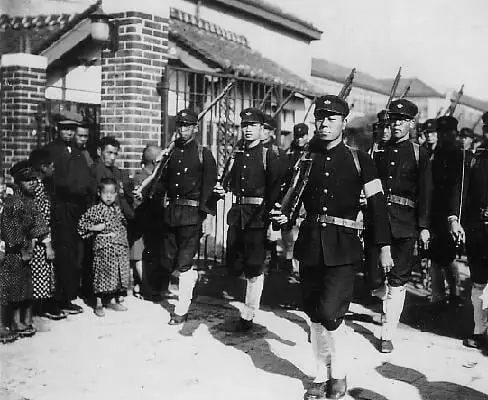
Military training courses at Osaka Municipal Commercial College. Credit: Wikimedia Commons
The navy didn’t just grow in size. It also used new technologies to become stronger. They focused on improving torpedoes. Japan made the powerful Type 93 torpedo. This weapon would be important in future wars. Naval aviation, which was still new, also improved a lot.
Japanese engineers made aircraft for carriers. This set the stage for strong carrier forces that would hurt Allied fleets in World War II. So, the Taisho period wasn’t just about a bigger navy. It was about a smarter and more advanced navy. This changed who was in control in the Pacific.
Military Conflicts and Their Impacts
Japan’s military actions had big effects. During World War I, Japan took over German bases in the Pacific. This made Japan’s colonies stronger. It also made Japan look more powerful to other countries.
But Japan’s involvement in the Russian Civil War was harder. They wanted to control areas with lots of resources and stop communism. But things didn’t go as planned. People didn’t like it when soldiers got hurt. In the end, Japan had to pull back. This showed that Japan’s military had limits. It also showed how hard it was to use force in Asia.
Relations with Neighboring Countries
In 1915, Japan gave China a list of 21 demands. Japan wanted more control over China’s economy and politics. The Chinese saw this as Japan trying to take over. This made them dislike Japan even more.
Korea was under Japan’s control since 1905. Japan tried to stop Koreans from wanting independence. Japan’s harsh rules only made Koreans more upset. This set the stage for future problems.
Japan’s actions did help its economy. But they also caused a lot of anger in China and Korea. This bad feeling lasted for a long time. It hurt relations for many years and helped start World War II. This time was a big change for Japan and its relationship with its neighbors.
Diplomatic Relations
Japan’s Role in International Affairs
Japan wanted to be seen as a world power, not just a copy of the West. It joined international groups and agreements. One big step was joining the League of Nations. Japan used the League to speak up for racial equality.
But not everything went well. Japan’s “Twenty-One Demands” on China made people around the world angry. But Japan kept signing international treaties. One was the Washington Naval Treaty of 1922. This treaty limited how big navies could be. It was seen as a good thing at first. But it caused problems later because it limited Japan’s navy more than the US and Britain’s navies.
So, the Taisho period was a complicated time for Japan. It wanted to be recognized and have influence. But its actions in Asia often hurt its efforts. These experiences would shape Japan’s future foreign policy. They would also play a big part in the start of World War II.
Treaty of Versailles and Its Implications
Japan played a careful role in the Treaty of Versailles talks after World War I. It used its status as a winning ally and its strong military to push for a racial equality clause. This clause didn’t have much power, but it was a symbolic win for Japan.
But the treaty also let Japan take over German areas in Shandong, China. This made Japan stronger, but the Chinese people didn’t like it. They saw it as more Western control. This led to protests against Japan.
So, the Treaty of Versailles was a mixed bag for Japan. It got more land and a symbolic win for racial equality. But it also caused problems with China. These problems would have big effects in the years leading up to World War II.
Relations with Western Powers
Japan wanted to be part of the Western world. It joined the League of Nations and used Western technology and business ideas. Being friends with the West helped Japan. For example, it took over land during World War I.
But there were problems under the surface. Japan didn’t like how the West controlled Asia. It was upset when the Treaty of Versailles didn’t include a strong racial equality clause. The West was also worried about Japan’s strong military. This worry grew when Japan acted aggressively in Korea and China. Japan’s “Twenty-One Demands” on China were seen as a clear attempt to take over, which worried the West.
So, the Taisho period showed the problems between Japan and the West. Japan wanted to work with the West and be recognized. But history, cultural differences, and competing goals made this hard.
Health and Medicine
Public Health Initiatives
During the Taisho period, Japan worked hard to improve people’s health. They saw that many people were getting sick and living in bad conditions. So, they made a plan.
First, they worked on sanitation. They built clean water systems and sewage systems, especially in cities. This helped stop diseases like dysentery and typhoid fever that spread through water.
Next, they started vaccination programs. They saw that Edward Jenner’s smallpox vaccine worked well. So, they started giving vaccines for smallpox and other diseases like diphtheria and cholera. This helped lower death rates, especially in children.
They also set up health clinics all over the country. These clinics had trained doctors and nurses. They gave basic medical care and taught people about health. This made it easier for people to get medical help. It also helped catch health problems before they got serious.
These health programs helped a lot, even though they weren’t perfect. They made people healthier during the Taisho period. They also set the stage for future improvements in public health and disease prevention.
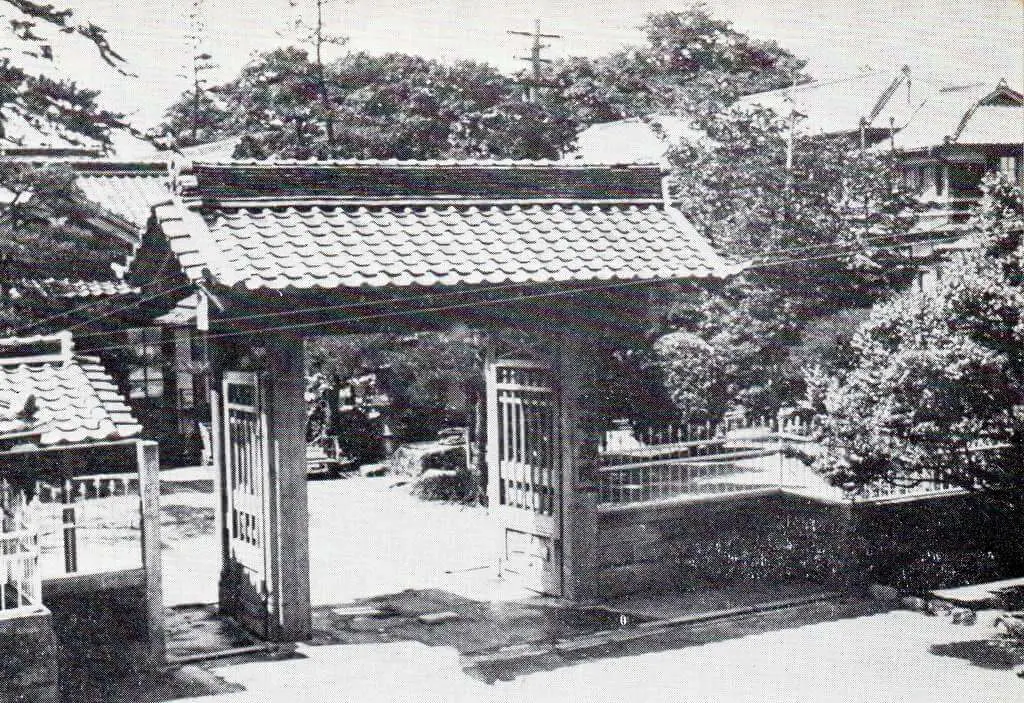
Advances in Medical Science
During the Taisho period, Western medical practices became popular in Japan. Japanese doctors and researchers were keen to improve health care. They didn’t just want new equipment. They used Western ways of finding out what was wrong with people. These ways were based on science, not guesswork or old beliefs. Microscopes became common. They helped doctors understand diseases and the germs that caused them better.
But using Western medicine wasn’t easy. It had to be mixed with traditional beliefs. But the benefits were clear. For example, surgery became safer and worked better because of clean techniques developed by Joseph Lister. Also, new drugs and treatments came to Japan. One of these was Salvarsan, a treatment for syphilis. This greatly lowered death rates.
Response to Epidemics
The Taisho period had some big health problems. Influenza, or the flu, was a big one. There were many outbreaks. The Spanish Flu pandemic of 1918-1919 was especially bad. It hit Japan hard. This showed how vulnerable a fast-growing and connected society could be.
But the government responded well. They used newspapers and radio broadcasts to tell people to stay clean. They told people to wear masks and keep distance from others. These are things we still do today.
Doctors, who knew more about diseases thanks to Western science, worked hard to help the sick. There was no cure for the flu then. But hospitals and clinics were important in fighting the disease. These experiences helped shape future health measures and emergency plans.
Architecture and Urban Planning
Influences on Modern Architecture
In Japan’s Taisho period, architecture was more than East meets West. It was a mix of new ideas and changes. Architects wanted to try new styles. They liked Western designs like neo-classicism and brick buildings. You can see this in Tokyo Station’s layout, big columns, and red-brick front.
But they didn’t just copy the West. Architects like Tatsuno Kingo mixed Western and Japanese styles. They used traditional things like big eaves, tatami mats, and big gardens. This made the buildings fit with nature. The Imperial Hotel is a good example. It has a Western brick outside and a Japanese roof and courtyards.
This made a new style of architecture. It showed Japan was modern but still kept its culture. Buildings from this time, like the old Japan Industrial Bank and the Mitsubishi No. 1 Building, are still important today. They show the spirit of change and art from that time.
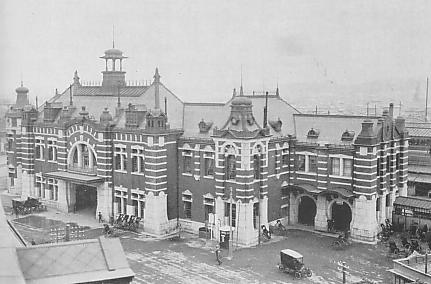
Urban Development Projects
In the Taisho era, Japan’s cities changed a lot. More people lived in cities and they wanted to modernize. So, they started big projects.
They built tall office buildings from red brick and steel. These were different from old wooden buildings. These buildings showed Japan’s growing industry.
They also focused on infrastructure. They built new sewage systems and water treatment plants. This made the cities cleaner and healthier.
They also put electric trams on the streets. These trams were faster than horse-drawn carriages. They also made parks with Western and Japanese designs.
These parks were places for people to relax and have fun. They helped people in the city feel like a community.
Preservation of Traditional Structures
In the Taisho era, Japan’s cities didn’t just become modern. They wanted to be modern but also keep their traditional beauty. This made the cities unique.
New buildings showed a strong spirit. Skyscrapers and banks made of red brick and steel showed Japan’s growing power.
Big streets like in Paris replaced small winding alleys. This changed not just traffic but also ideas.
But they didn’t forget the old. They put traditional temples and shrines in modern buildings. They also mixed old Japanese design with new buildings.
Gardens with carefully raked gravel and koi ponds gave quiet places to rest from the busy city. This mix of new and old is still important in many Japanese cities today.
Education and Intellectual Growth
Expansion of Education System
In the Taisho era, schools grew a lot. This helped make a modern workforce and smarter people. But they didn’t just build more schools.
In the Meiji era, the government made sure almost everyone could read. This was important in the Taisho era. They wanted people to go to high school.
During this time, new public and private high schools were built all over. They served the growing city population and need for skilled workers. But high school wasn’t just about having more students.
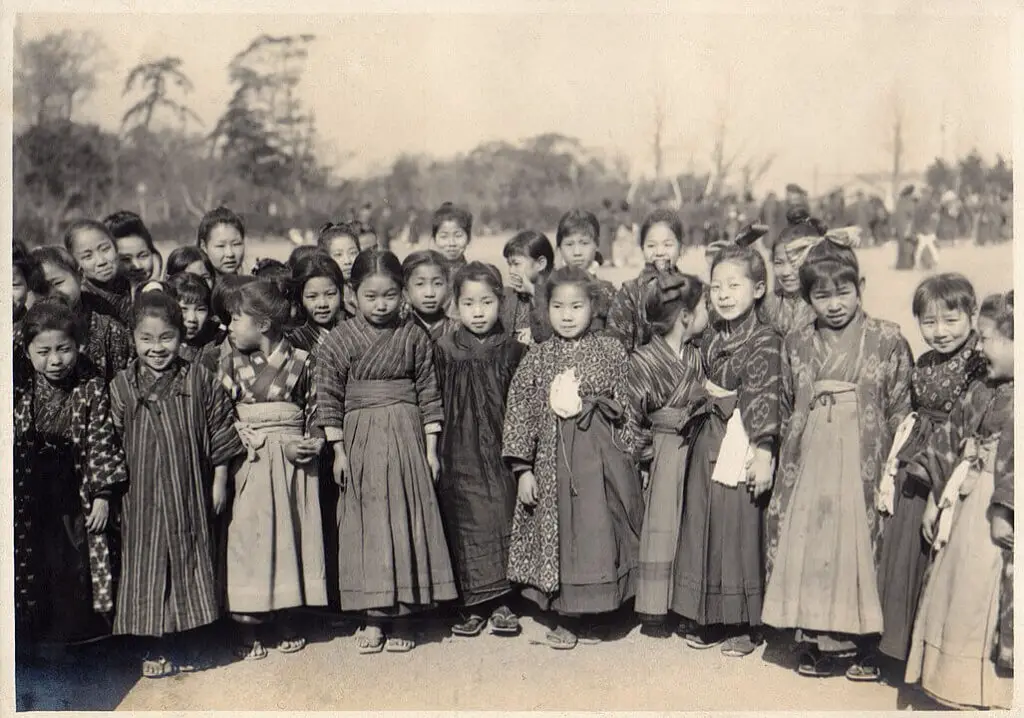
School lessons changed to help students learn what they needed for a modern country. They studied more science, math, and useful skills. This helped Japan grow and compete globally.
Higher education also changed a lot. New universities were built, like Tokyo Women’s Higher Normal School. This let women study more.
Existing universities grew too. They offered more degrees in science and social sciences. This made people more curious and analytical, which was important for a quickly modernizing society.
Intellectual Movements
Thinkers and researchers wanted to learn and shape Japan’s future. They talked about many topics. These talks weren’t just in libraries, they were also in newspapers.
A famous movement in Japan used ideas from its own traditions. Thinkers like Nishida Kitaro talked about “minpaku,” or Japanese identity. They discussed things like national identity, tradition vs. modernization, and Japan’s place in the world.
Ideas from the West also had an impact. Some philosophers were interested in Marxism, which talks about class conflict and justice. Others, like Yanagita Kunio, wanted to keep and value Japan’s traditional culture against Western lifestyles.
Different movements had their own ways, but they all wanted to learn about Japan’s past, deal with its present, and plan for its future.
Key Educational Reforms
In the Taisho period, Japan’s education system changed a lot. This was to prepare people for a modern, strong industrial nation.
One big change was making everyone study from age four to six. This helped everyone learn to read, write, and do math.
School lessons focused on being useful. They still taught history and literature, but they focused more on science, math, and technology. Schools had labs for physics, chemistry, and biology. This helped students learn about Japan’s growing industry.
They also started more vocational training programs. These programs taught students practical skills like carpentry, metalwork, and textiles. This helped meet the need for skilled workers in factories and workshops across the nation.
Religious and Philosophical Trends
Shifts in Religious Practices
In the Taisho period, new religious groups started along with Shinto and Buddhism. This showed bigger cultural changes in Japan.
Society became more relaxed and people started questioning old rules. As a result, new religious groups appeared. These groups, guided by inspiring leaders, shared new spiritual ideas. They reached out to people who were looking for purpose in a quickly changing, modern world. For example, groups like Omotokyo focused on end-of-the-world ideas and strong national beliefs. This reflected concerns about Japan’s role in the world.
Ideas from the West, like individualism and personal happiness, also had an impact. Even though Christianity wasn’t a main religion, it started to interest scholars with its message of equal rights. Being open to Western culture and national identity issues led to new religious groups that mixed Japanese practices and Western philosophy.
Influence of Western Philosophy
Thinkers like Yoshino Sakuzo were important in this movement. Yoshino supported democracy and individual rights. He was inspired by Western ideas of freedom and equality. He questioned the strict social order and wanted a government where everyone could participate. His writings connected with people who wanted more political power, especially after World War I, when Japan fought with democratic countries like the US and Britain.
But accepting Western ideas wasn’t simple. Thinkers like Natsume Sõseki tried to balance these new ideas with Japan’s own deep thinking traditions. Sõseki’s books, filled with sadness and deep thought, looked at the challenges of living in a fast-changing world while keeping important cultural values.
Rise of New Religious Movements
In the Taisho period, technology changed Japanese people’s daily lives. The improved railway system let families travel to see relatives far away. This helped bring the nation together.
Weekend trips to hot springs or coastal cities became common. Businesses grew because salesmen could easily go to new places. Farmers could sell their produce in more markets.
Communication also changed a lot. Telephones, at first a luxury, let people talk in real time over long distances. Imagine a country doctor talking to an expert in Tokyo. Radio broadcasting added another layer of connection.
Radios brought music, news, and entertainment from around the world to homes. Families gathered around the radio for a shared national experience. This included live music, official announcements, and weather reports.
These advances in communication and transportation made the world feel smaller. They also helped create a sense of shared national identity.
Emperor Taisho’s Decline
Emperor Taisho’s rule ended early because his health got worse. People aren’t sure why, but it could be stress, sickness, or his fancy lifestyle. By the 1920s, he was often alone and couldn’t do his job.
This was a big problem for the royal family. To keep things stable, Crown Prince Hirohito, who was in his early twenties, became regent in 1921. This was a big change. Hirohito, later known as Emperor Showa, started to take on more public duties. This hinted at his future role as a wartime leader.
Emperor Taisho’s health issues led to big changes in Japanese politics. Because of his illness, different political groups started fighting for power. They all wanted to shape the future Emperor Hirohito. This shaky period suggested that tough times were ahead.
In 1926, Emperor Taisho died. His rule was mostly quiet, but his health problems changed Japanese history. They led to his son, Hirohito, becoming more powerful and Japan becoming more military-focused before World War II.
Transition to the Showa Period
Emperor Taisho died in 1926, ending the Taisho era. This was a time of big changes for Japan. Crown Prince Hirohito became the new emperor and started the Showa era. The Taisho era set the stage for the ups and downs to come.
In 1926, Japan was full of contradictions. It had a modern infrastructure and growing industry because of education reforms and new technology. But people were worried and wanted a stronger national identity. Questions about democracy, the rise of the military, and the stress of a fast-changing society would affect the Showa era.
Hirohito, different from his father, became a key figure. He faced big challenges at home and abroad. The Taisho era, with its new ideas and economic growth, gave Japan tools and potential. But it was also a time of unresolved tensions.
Legacy of the Taisho Era
The Taisho period, just 15 years long, had a big impact on Japan. It changed the country’s politics, economy, and culture.
- The political system started to become more democratic and people got more involved.
- The economy grew fast and became more modern.
- The culture saw a lot of new art and writing.
- Society went through big social changes and everyday life changed too.
So, the Taisho period’s legacy is like a complex tapestry. It was a time of great potential, but also a time of unresolved issues.
FAQs
1. What defined the Taisho period in Japan?
The Taisho period was defined by significant political, economic, and social changes, including the rise of democratic movements, industrial growth, and cultural flourishing.
2. How did the Taisho era impact Japan’s economy?
The Taisho era saw substantial industrial growth and integration into the global economy, but also faced challenges like the post-World War I recession and the Great Kanto Earthquake.
3. Who were significant cultural figures during the Taisho period?
Notable cultural figures included authors like Ryunosuke Akutagawa, poets like Hakushu Kitahara, and artists like Taikan Yokoyama and Seison Maeda.
4. What were the major political changes in the Taisho era?
Major political changes included the shift towards democratic governance, the rise of political parties, and the enactment of the General Election Law in 1925.
5. How did the Taisho period influence Japanese society?
The Taisho period influenced Japanese society through urbanization, changing roles of women, education reforms, and the blending of traditional and Western cultures.

